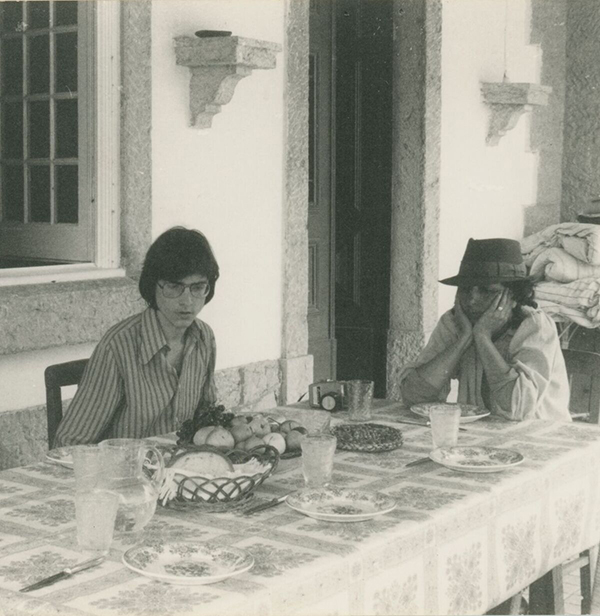I first started filming my mother when I was 15, after I picked up her father’s standard 8 camera in the summer of 1976 and figured out how to use it. I didn’t know my grandfather well as he died when I was 5, but I owe him a lot. Inheriting his film equipment got me hooked and started me on a long career as a filmmaker. He also left hours of amateur footage of his family shot from 1929 until his death in 1966. Films of mum growing up, dancing with my dad in the sixties, playing with her kids. Precious family footage which took on a new significance when I started making our film for the BBC: ‘Paula Rego, Secrets & Stories’.

My mother rarely confided in me. As the only boy with two older sisters who was packed off to boarding school, I was always the last to know what was really going on. I discovered from an early age that the only way to connect with my mother was to ask her about her work. Either that or the movies. As those were subjects I also loved, I often felt I understood her work, but ironically, never felt I completely understood her. Then, after her 80th birthday, she started telling me stories I’d never heard before.

Stories which filled in so many gaps in my knowledge - about her life and mine - that I felt compelled to record them. I had just spent a gruelling year making a movie and 13 hours of television so the last thing I wanted to do was pick up a camera, but this felt different somehow. Initially I didn’t intend it to turn into a film in the way that it did. I was just trying to uncover personal truths which might be of interest to my family. But when I realised that the secrets of her life helped explain her pictures, it dawned on me that the film might have a wider appeal.
I discovered that her paintings aren’t just about the stories she chooses - Jane Eyre or Padre Amaro - their power is drawn from personal experiences, secrets, which make them more truthful, more real. In fact, the pictures were often Paula’s way of coming to terms with secrets that still haunted her.
Although I’ve made scores of fiction films, this was my first documentary so I had to learn as I went. One similarity between the two is story. Like fiction a documentary is only as good as its story. As the discovery of the film was that Paula’s pictures hide defining secrets, I told the story of her life through the secrets of her paintings. I established one rule - to only reveal secrets which painted pictures.

The challenge was to reflect her truths and not my interpretation of them. For example, her relationship with my father was completely different from mine, but I nevertheless doggedly tried to portray him through her eyes because he was the subject of so many pictures. For me he was a different person, but the one who ended up in the film is her version of him. Now I too have a secret. The experience of making this film has been so transformative that I’m finding it hard to return to fiction.

Paula Rego: Secrets and Stories is nominited for Best Arts Documentary at The Grierson Awards 2017
Nick Willing for Kismet Film Company; first shown: BBC Two
